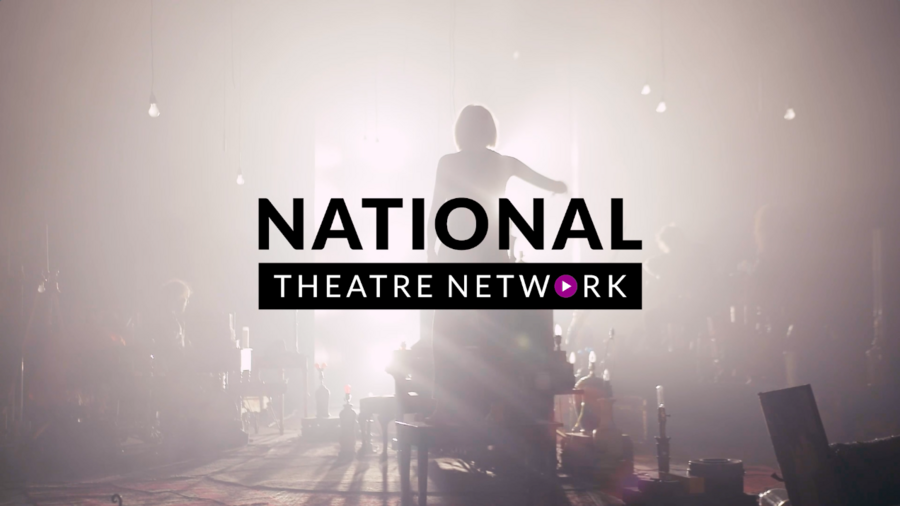There was a time in Randy Taradash’s career where there wasn’t even a budget line item for digital advertising. Not only does the acting director of marketing and communications at American Conservatory Theater (ACT) now have that line item, Taradash (he/him) also may have to start considering a future with a line dedicated entirely to the marketing of his company’s streaming offerings. ACT is one of three theatres, alongside Woolly Mammoth Theatre Company and Irish Repertory Theatre, who are the founding members of Broadway on Demand’s newly announced National Theatre Network.
The National Theatre Network is a new digital platform, to be available through a variety of locations—including on the web, mobile, Apple and Android app stores, AppleTV, Roku, Chromecast, and Amazon Fire TV—for major regional theatres that allows audiences to watch, support, and connect with theatres across the country. The new platform aimed at regional theatres debuts on Sat., May 15, with the film adaptation of the Bushwick Starr’s production of Animal Wisdom, presented by ACT and Woolly Mammoth, directed by Amber McGinnis and Emilyn Kowaleski, and filmed in Woolly’s theatre in Washington, D.C. The National Theatre Network aims to provide theatre fans around the world a one-stop-shop to experience professional productions like this along with classes, galas, award ceremonies, and more.
“It’s not often that an industry gets to expand its accessibility in different ways and rethink their art in different ways,” said Taradash. “As a marketing person, that’s kind of thrilling. It’s a challenge, but it’s thrilling.”

The challenge of reaching those audiences is where Broadway on Demand stepped in. According to Broadway Licensing CEO and president Sean Cercone (he/him), shortly after launching Broadway on Demand’s main website, the organization realized that regional theatres needed their own platform and marketing tools more attuned to their needs than the needs of Broadway productions and stars, as are other services, like BroadwayHD. So the company started working with theatre organizations to tailor a new digital platform to the specific technology and streaming needs of regional theatres, hoping to provide a platform and infrastructure that individual theatres, especially in a time of pandemic-reduced staffs, might not have the time or ability to accomplish.
Said Cercone, “We started hearing the same things across the board—that a platform that was specific to these organizations would be really helpful to extend their branding, reach a larger audience base, and to put in best technology practices.”
The problem that companies like ACT had been having, said Taradash, was that they weren’t just having to juggle new technology, but also new tech partners whose business models didn’t necessarily fit the way nonprofit regional theatres function. The difference with the National Theatre Network, he noted, is that it’s not a tech company or ticket seller coming in to figure out theatre; it is run by theatre people who are aiming to help regional theatres take the next steps into the future. This is a company, he said, that understands the daily needs and functions of a theatre’s marketing and ticketing practices, and can take those into account when building a platform around the theatre’s work.
“At the end of the day, we have the same goals,” said Taradash. “We do it in completely different mediums and different ways, but because we share that passion for connecting audiences to theatre—it’s great to work with a partner that gets it and then meets challenges head on.”
“The fact of the matter is that a lot of people in other parts of the country have never even heard of Woolly Mammoth, and they’re never going to come to D.C. to see a show by Woolly Mammoth.”
Woolly Mammoth’s director of marketing, Timmy Metzner (he/him), said the theatre was looking for a partner who was breaking into the digital sphere and also able to provide dedicated time and resources to building this kind of a platform. Taradash echoed a similar sentiment, complimenting Broadway on Demand’s willingness to continually reinvest and reevaluate themselves to make sure that audience interaction and experience continually improve.
After months of working out the kinks, the result is essentially a streaming wing for these companies. Cercone pointed to Broadway on Demand’s licensing company as a point of comparison. With their licensing work (which theatres are not required to utilize to be part of the National Theatre Network platform), Broadway on Demand prioritizes solving what Cercone referred to as “pain points” in the licensing process, alleviating stressors on their partners while maximizing revenue and efficiency.
“This is just an extension of that philosophy,” said Cercone, who also pointed to the need to protect the intellectual property of authors and playwrights, who he feels have often been left out of the streaming conversation. “How do we build something that is the best technological practice to help make what they’re trying to do more efficient so they can leave the focus of their time on the art?”
At a time when many theatres are tentatively dipping their toes back into live performance, even announcing indoor seasons, the emergence of the National Theatre Network seems to indicate some faith that streamed theatre will be around for a while, even post-COVID. Indeed, Cercone said that about 75 percent of the people he’s talking to think streaming is here to stay. Among that 75 percent would be Woolly Mammoth artistic director Maria Manuela Goyanes (she/her), though she acknowledged that not all of her colleagues are looking at digital work the same way. For her part, though, digital work is something she wants to continue to push further, including creating work specific to the medium.
“For all of the work that we’ve done to learn and all of the experiments we’ve done,” said Goyanes, “it just sort of seems a little bit nuts to not actually keep experimenting and see the fruits of all of this new learning and continue to experiment in this medium. For Woolly, I can say without a doubt, we definitely want to keep going, to see what’s possible in the future.”

Despite the new platform, things like filming the production and negotiating contracts with unions will still be up to individual theatres. Goyanes said that, even though the two actor unions, Actors’ Equity Association and SAG-AFTRA, seem to have come to a pandemic-only agreement after a months-long spat over digital jurisdiction, there are lingering tensions around theatres working in this medium. It’s a conversation that may see new light as streamed theatre takes another step toward permanency and creative minds look for new and exciting ways to experiment with the form.
As such the National Theatre Network can offer an important way for regional theatres to lower the access barrier, said Cercone. He pointed to the ability for theatres to offer their productions to those who live outside of their city (or even country), theatregoers with disabilities, or with childcare needs or work restrictions that prevent them from seeing theatre in person. Both Cercone and Goyanes brought up the educational potential of a platform like this, whether it’s in allowing access to schools who might not be able to make a trip into a theatre or simply to open the door for theatre lovers and academics interested in seeing more artistic visions and interpretations.
Goyanes pointed to the work Oregon Shakespeare Festival has done online as an example of work that she otherwise would have missed had it only been offered in person. A network like this, she said, could offer a more complete vision and history of American theatre.

“The fact of the matter is that a lot of people in other parts of the country have never even heard of Woolly Mammoth,” said Goyanes, “and they’re never going to come to D.C. to see a show by Woolly Mammoth. So when you talk about access, I just think about how hard it was when I was studying theatre to find video or work that actually even came close to being the vision that a playwright has for the work. That’s changing now.”
When talking about access, especially for audiences outside traditional performance times, Cercone made the point that an entire generation growing up now that is not only used to this type of platform, but are in fact attached to streaming in a way the older audiences are not. He thinks that streamed theatre could be a gateway for that generation. Potential audience members could gain insight into a theatre company through the platform, which in turn would result in more informed consumers. And an informed consumer, he reasoned, is going to consume more. In essence the National Theatre Network is a way for theatres to introduce and showcase their work before audiences even set foot inside their buildings.
“One of my great philosophies is that we’ve got to leave the art form better than we found it,” said Cercone. “One of the ways we do that is by expanding the audience base. If theatre were a part of more people’s daily lives, then we would have a more robust theatre in this country. But there’s still a long way to go.”
This philosophy extends to marketing and branding, with Cercone positing that, while Broadway on Demand may offer audiences a certain stamp of quality, the company is taking a backseat to the brands of individual theatres, and keeping patron focus on the individual organizations, shows, and artists. Part of the benefit of the network is that it meshes with ticketing systems and processes already in place at these theatres, allowing them to track ticket-buying and subscriber views from the National Theatre Network alongside their in-person data. While ticket buyers will be able to access the content through Broadway on Demand, the National Theatre Network platform, or the individual theatres, Cercone said that the branding centers on the producing theatre rather than directing patrons to another platform. It’s important, Cercone noted, to maintain brand relationships.

From Metzner’s marketing perspective over at Woolly, this setup allows him to take into account different audiences and buying patterns, opening up his focus to include more than just the local community who has attended or heard of Woolly before. Suddenly, he said, he can broaden his marketing efforts to fans of theatre in general or potential patrons who might be interested in a certain work or artist. The thought is that the local audience in D.C. has built a relationship with the theatre already, making them eager to continue experiencing Woolly’s art in person; the National Theatre Network can then open the door for everyone else who can’t attend in person. Creating more entry points this way, Metzner said, will allow the company to grow audiences and subscribers beyond what they’re able to accommodate in their D.C. space. It’s also adding potential to how Goyanes is planning upcoming seasons.
“A lot of my in-person offerings are going to be the things that I’ve wanted to do that I wasn’t able to do because of the pandemic,” said Goyanes. “I think that Woolly and other colleagues across the country have a number of incredible projects that we’re just itching to do. But that means that we’re pretty full for the next year, because we basically weren’t able to do them. So I look at the digital work as actually additive, as a way for us to be more nimble and responsive to what’s happening in the culture around us. And that feels like a great complement to the stuff we’re going to be doing in person.”
Joining something like the National Theatre Network is a choice, representatives for ACT and Woolly both acknowledged, that needs to be evaluated by each individual theatre. Metzner encourages theatre leaders to follow their audience’s affinities, finding what avenue will work best to guide their virtual experience. Goyanes pointed to the fact that a platform like this offers more things for theatres to play with, with examples like galas and peer-to-peer fundraising as aspects of theatre that might benefit from stepping outside of the box. But there are some companies, like Goyanes’s example of Oregon Shakes, that have taken on creating a platform themselves.
At the end of the day, Taradash noted that theatre companies aren’t film studios or tech companies. Some may be able to evaluate and decide that yes, this is something they can take on internally, but plenty of others would benefit from a partner who could alleviate some of those “pain points.” It’s important, Taradash said, to evaluate capability as it relates to the quality of work a theatre wants to put out into the world. Taradash sees this as the forefront of this conversation, comparing it to Apple products like the iPhone that update every 18 months with new features and capabilities.
That’s the same place Cercone finds himself, seeing an evolving art form in streaming theatre where the technology and capabilities are still very much in their infancy.
“I really see this moment of disruption to our industry as not just a tremendous opportunity, but one of those watershed moments in the history of theatre,” Cercone said, comparing it to the regional theatre movement and the expansion of theatre outside of New York City. “I think that’s what we’re seeing here. I think we’re seeing a whole new opportunity, and there’s artists who are writing specifically for the form, which is fascinating. I think we’re going to see an explosion as we’re moving to get back together.”
Jerald Raymond Pierce (he/him) is associate editor of American Theatre. jpierce@tcg.org


